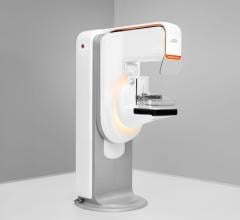
August 10, 2022 — TransMed7, LLC announced that the first clinical cases of the final commercial production version of the Sparrow device (a member of the new SpeedBird family of vacuum-assisted, Single Insertion / Multiple Collection (SIMC) Breast Biopsy devices) were successfully performed by Dr. Edgar Staren, a distinguished surgeon and former President of the American Society of Breast Surgeons (ASBrS).
Dr. Staren commented, “Image-guided breast biopsy using TransMed7’s SpeedBird SIMC devices involves minimal setup, is very easy to perform because of their extreme ultrasound visibility, is very well tolerated by the patients, and has taken only a few minutes to complete for each clinical case. The core specimens were simply outstanding in all the cases I performed, and provided exactly what our team needed to plan for each patient’s therapeutic management.” He added, “I can even say that these first cases spanned the spectrum of what I know to be some of the most challenging breast biopsy cases that can be encountered by physicians, and the devices performed brilliantly.”
Dr. James W. Vetter, TransMed7 Co-Founder and Chairman, stated, “We specifically designed and developed our SpeedBird and Concorde Breast Biopsy platforms to address and overcome the many problematic issues associated with the current decades-old biopsy devices, including their difficulty visualizing the needle tip with real-time imaging modalities, sharp and potentially traumatic needle tips, limitations in biopsy specimen quantity and quality, and restrictions on tissue type that can be collected by them.”
The SpeedBird and Concorde device platforms are based on TransMed7’s patented Zero5 work element composed of a fused, single element constructed from 3 hypotubes, laser cut and welded to form articulable twin cutter blades at the end of a rotating open tube. This element gently penetrates, cores, severs, and provides a pathway to transport multiple tissue samples via a closed-circuit fluid management and vacuum system into a detachable chamber. Zero5 forward coring technology enables these devices to reliably and consistently obtain full-core, uniform-diameter samples with intact architecture from all of the various soft tissues. It was developed as an entirely new mechanism intended to deliver superior results while also lowering costs, and to facilitate ease of use for rapid learning curve and adoption.
“We are delighted to announce the successful clinical utilization of our production level, minimally invasive breast biopsy devices as we formally roll out our commercial launch,” stated Dr. Vetter. “The real importance of achieving this milestone is that it demonstrates unequivocally that our Zero5 core technology has now clinically confirmed its transformational nature for the care and benefit of patients worldwide. This result proves that our plan to apply Zero5 technology to all of our next-generation biopsy device platforms, adapted for various applications all over the body, is an achievable benchmark. These include our Heron, ThunderBird, Cardinal, and Phoenix platforms among others still to come, as well as the robotic instrument applications that we derive from each of them.”
The SpeedBird platform of Breast Biopsy devices includes four models of hand-held, ultrasound guided, vacuum assisted, full fluid management, SIMC devices with simple, extremely cost-effective designs based on the common Zero5 forward coring technology with 10, 12, and 14-gauge core needle sizes. SpeedBird 38 is designed for fully automated cycling (tissue coring, part-off, and transport); SpeedBird Universal and SpeedBird Universal 99 are designed for manual coring length control and automatic tissue transport (SpeedBird Universal 99 further features a reusable handle and replaceable needles, resulting in a lower cost ideal for emerging international markets); and the new Sparrow device, which is designed for manual coring length control and automatic tissue transport and is intended to become the ultimate “Terminator” of the Single Insertion – Single Sample (SISS – limited to only one sample for each insertion) “snapgun” devices being used on a majority of patients today.
The Concorde™ platform of two device models, also based on adapted Zero5® technology, are fully automated, selectively forward coring or combined forward and shielded side coring, vacuum-assisted, full fluid management, 10-14-gauge devices. The Concorde ST device is designed for stereotactic and 2D/3D tomosynthesis guidance breast biopsy procedures with full, built-in (console-replacing) capabilities. The Concorde US device is designed for either ultrasound guidance for handheld use or with an optional, reusable, stage mount adapter for stereotactic and 2D/3D tomosynthesis use.
Eugene H. Vetter, TransMed7’s Co-Founder and CEO, stated, “The successful use of these devices now proves that we can adapt and apply our patented Zero5 technology to provide the world’s most extensive range of transformational, next-generation, minimally invasive device platforms for biopsy procedures and interventional solutions in the near future. Patients will finally be able to look forward to this next-generation of devices replacing the decades-old technologies currently being used on them. Look for announcements of first clinical case results of the Concorde™ family of Breast Biopsy devices in the coming weeks.”
TransMed7 anticipates participating in the next Radiological Society of North America (RSNA) meeting in Chicago, IL; the next American Society of Breast Surgeons (ASBrS) meeting in Boston, MA; and the next Society of Breast Imaging (SBI) meeting in Washington, D.C., where we will report expanded clinical results from multiple centers using our FDA-cleared SpeedBird and Concorde biopsy devices for Breast Health.
For more information: www.transmed7.com


 March 21, 2025
March 21, 2025 








